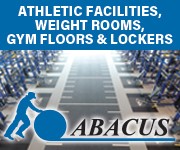However, about five years ago, thicker and more durable versions of LVT were developed, making this a viable flooring option for private universities. The reason LVT flooring is so popular is that it replicates other floors such as marble, granite, stone, and many different types of wood more precisely than any other “mimicking” floor type ever created. Some dealers in the United States say that they have had designers who could not tell if a floor was LVT or the real thing until they actually touched the floor. And touching the floor may no longer “give it away” either.
Some LVT floors, especially wood LVT floors, have a granular surface, making it feel like the real thing. LVT is one of the first computer-generated floors. Essentially how it is made is that an image of a true wood or granite floor, for instance, is imputed into the computer. From there, the computer designs the floor, and then, using advanced manufacturing equipment, the floor is created.
Beyond the fact that the LVT floor so closely resembles the floor it is copying are two key benefits: (1) An LVT floor is invariably less expensive, often much less expensive, than the floor it is designed to mimic, and (2) An LVT floor tends to be much more durable than the floor it is replicating. For example, let’s say a student walks into a private university where a traditional wood floor is installed. If the student has stones or grit on his or her shoe bottoms, the chances that those stones or grit might mar the wood floor-potentially even requiring that it be resurfaced-can be considerable. While an LVT floor is certainly not impenetrable, it more than likely will hold up much better than the real wood floor and might not show any damage whatsoever.
Cleaning LVT
Because LVT looks so similar to the floor it is mimicking and also retails at a far lower price point and tends to be more durable, building managers and cleaning contractors will likely see more new commercial facilities as well as newly renovated commercial facilities with LVT floors, if they haven’t already. Cleaning contractors need to know how to properly clean these floors to keep them looking their best.
First, the very good news: in most cases, LVT floors do not need to be finished. This is actually another cost savings for the facility owner because stripping and refinishing floors can be costly. But it is also one less consideration, and a big one at that, that cleaning contractors must be concerned about. Now, the good news: overall, LVT floors require only light maintenance. However, do not interpret “light” maintenance to mean no maintenance. A typical floor-care program for an LVT floor is the following:
On a daily basis, dust mop or vacuum the floor using a canister or backpack vacuum cleaner. A vacuum cleaner is preferable because it pulls dust, soil, and grit from the floor. While a dust mop also will remove some dust, grit, and soil, it has a tendency to push a considerably large amount of these contaminants from one area of the floor to another. Also, vacuuming is more protective of indoor air quality than dust mopping the floor. Further, avoid using an oil-treated dust mop. The treatment may leave streaks on the floor and also make it slippery.
On an as-needed basis, spills should be cleaned up as soon as they are noticed. This is the one time that a mop and mop bucket should be used. Be sure to always use a clean mop head and fresh cleaning solution. If either of these are soiled, these soils will be applied to the floor during the mopping process Depending on foot traffic and the location of the LVT floor (building lobby versus staff lounge where it may not be seen by as many people), the floor should be scrubbed clean.
If a very large area, it may be best to use an automatic scrubber with relatively gentle scrub brushes and a pH-neutral cleaner. For a small to medium-sized area, a far less costly scrubbing system, such as an “auto vac” floor cleaning system, will do the job.
Auto Scrubbers Versus Auto Vacs
It would help to describe these two systems and how they work. Auto scrubbers revolutionized floor cleaning when they were first introduced about 50+ years ago. They apply cleaning solution, scrub clean the floor, and then vacuum up moisture, all in one step. They are the perfect system for cleaning large floor areas, such as in a convention center, airport terminal, and so on. The key drawbacks of these systems, however, is that they are costly to purchase, they are often costly to service and maintain, and they do require proper training to operate.
An auto vac works in a similar fashion. As it is walked over the floor, cleaning solution is applied directly to the floor and a pad attachment provides the agitation needed to loosen and remove soils, which are then vacuumed up. Battery-operated systems can clean up to 20,000 square feet per hour, these machines require minimal training, and their costs as well as the cost of ownership are far lower than a comparable auto scrubber. Their key drawback, however, is that, as mentioned earlier, they are best used on small to medium-sized floors, as would be found in a private university or office building. With both systems, use only pH-neutral cleaners. A harsher cleaning solution could potentially damage the surface of the LVT floor.
Right Time/Right Floor
In a sense, LVT floors are becoming popular at just the right time. Most facilities are looking for ways to reduce floor-care costs. Stretching refinishing cycles is one way to do this, but installing a floor that does not need to be finished, requires minimal maintenance, as well as costs less makes LVT the flooring many building owners have been waiting for.










